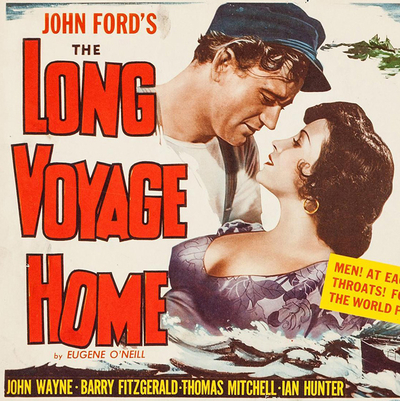John Ford made westerns. He made sure this was known, not least of all in his opening words to a famous 1950 meeting of the Screen Directors Guild where Ford faced down Cecil B. DeMille, who wanted to oust Joseph Mankiewicz as head of the Guild and enforce stricter creative censorship across the industry.
DeMille did this under the shadow of the "Red Scare" and the looming threat of television, while theatrically noting the number of foreign names at the meeting (he pronounced one famous director's name as "Villiam Vyler"). Ford's reputation was so unimpeachable creatively and politically that he was able to thwart DeMille, and this meeting is considered one of the first body blows against the Hays Code, which would die a death of a thousand cuts over the next decade and a half.
"My name is John Ford and I make westerns," is the famous line, and it would become the marquee under which his legend has been built. (It's the Hollywood version of lawyer – and actor – Joseph Welch scolding Joe McCarthy at the 1954 Army-Navy Hearings with the words "Have you no decency, sir?") What's less quoted are his next two sentences: "Cecil, your films make more money than any other films. I admire you, Cecil, but I don't love you!"
What I've never understood is how DeMille became such a crusader for probity and decency after making some of the most salacious films of the pre-Code era. Perhaps the conflict between Ford and DeMille was simply a matter of personalities: there's no doubt that there couldn't have been two more different men working in Hollywood in 1950, and posterity has certainly been kinder to Ford than DeMille.
John Ford certainly made westerns, but he made a lot more than that, from dramas (Arrowsmith, The Plough and the Stars) to adventures (Air Mail, The Informer), comedies (Judge Priest, The Whole Town's Talking), historical pictures (Mary of Scotland, Drums Along the Mohawk) and war movies (The Lost Patrol, They Were Expendable). The only genre he avoided was the musical; he even managed to make a film with Shirley Temple at the height of her juvenile fame (Wee Willie Winkie) without a single production number.
His greatest westerns (The Searchers, Stagecoach, She Wore a Yellow Ribbon, My Darling Clementine, Fort Apache, Rio Grande, The Man Who Shot Liberty Valance) comprise the bulk of not just his best films but the best films in the genre, though if you want to pigeonhole him as a western director you have to ignore Young Mr. Lincoln, The Grapes of Wrath, How Green Was My Valley and The Quiet Man.
Writing about Ford is like contemplating a climb to the summit of Everest: it's not easy, it's already been done a thousand times, and there are bodies strewn all along the trail. A sane person should wonder if it's worth trying. Which is why I'm going to tackle Ford by looking at one of his flops, made right at the end of the string of Ford classics which started with Stagecoach in 1939.
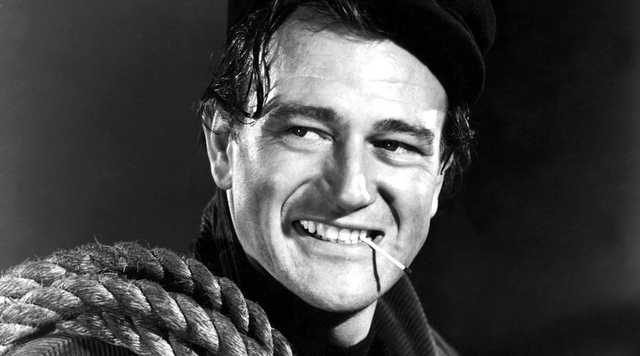
The Long Voyage Home was released in 1940, the same year as The Grapes of Wrath, and just as World War Two was becoming the context for if not the setting of a growing number of Hollywood films. It was made outside Ford's contract with 20th Century Fox for independent producer Walter Wanger and distributed by United Artists. Nobody would call it an essential Ford picture, but it reveals things about the man his major pictures often don't.
The film begins with a long, wordless sequence. It's a humid night in some West Indian port and the crew of the SS Glencairn are confined on board ship, staring silently across the water to the shore where local women strike sultry poses in the heat and relentless chanting echoes off the thick air. An audience with a basic education in the classics would get it – the sirens calling to Odysseus' crew from the Sirenum scopuli.
Ford began his career in the middle of the silent era, following his brother Frank across the country from his Portland, Maine hometown. He made nearly sixty films before the advent of sound and never lost his preference for pictures over words. The best movie, he said in an interview in 1964, is "long on action and short on dialogue."
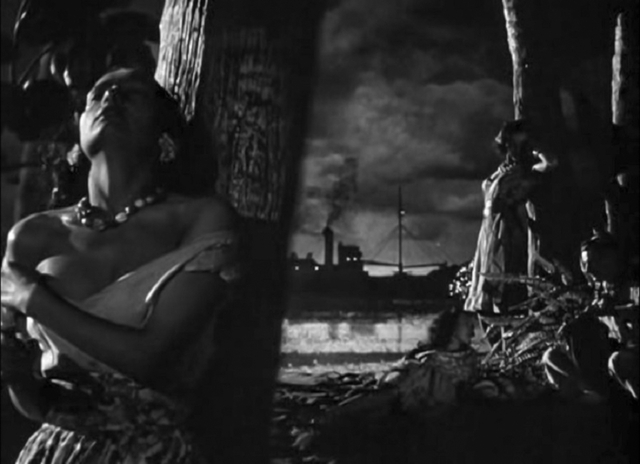
The captain of the ship orders a roll call to make sure nobody's escaped ashore, and this is how we meet the crew of the Glencairn. There's the burly Davis and Yank (Joseph Sawyer and Ward Bond), the reserved, haunted Brit Smitty (Ian Hunter), two Swedes – the comic Axel (John Qualen) and the good-natured Ole (John Wayne) – and a trio of Irishmen: the steward Cocky (Barry Fitzgerald), the taciturn Donkeyman (Arthur Shields) and Driscoll (Thomas Mitchell), the de facto leader of the ship's crewmen.
Driscoll has rowed across to the shore, returning just in time for the captain's roll call, where he's arranged for some local women to come aboard smuggling liquor in the bottom of their baskets of fruit. Carousing leads to brawling and someone pulls a knife. Knowing that the next cargo they'll be carrying is ammunition for the war in Europe, the captain had relaxed discipline but regrets his decision, banishing the women from the ship before they sail the next day.
Ford's movie was based on four early one-act plays by Eugene O'Neill: The Moon of the Caribees, Bound East for Cardiff, In the Zone and The Long Voyage Home. They were based on young O'Neill's experience as a merchant seaman, a period of his life where he began his alcoholism in earnest, in addition to suffering from depression and contracting syphilis.
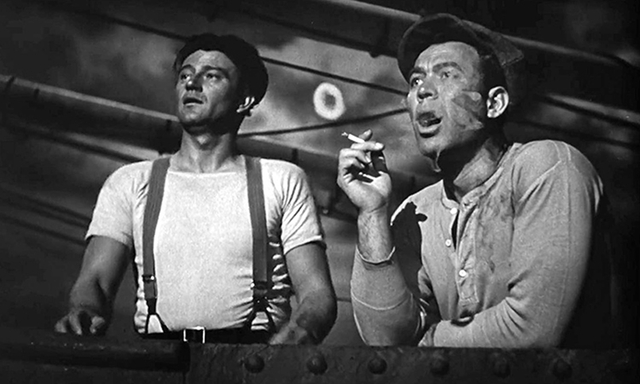
Also known as the "Glencairn Plays", they were adapted by Ford's longtime scriptwriting partner, Dudley Nichols. According to Wayne, Ford would make Nichols write and re-write scenes and then extract just a few lines for filming.
Unlike most of his contemporaries, and many literary titans who followed him, O'Neill's reputation seems to have abided, and his major plays such as Long Day's Journey into Night, The Iceman Cometh, A Moon for the Misbegotten and Strange Interlude still get revived on Broadway and the London Stage. (On the other hand, I can only imagine the dramaturgical revisions that would be needed to remount The Emperor Jones today.)
The only American playwright to win a Nobel Prize, I recall when he was a giant, the gold standard for literary drama, and will never forget the weeks spent studying the mood-crushing Long Day's Journey in Catholic boys school. But no literary reputation is safe in our post-literate world, and it would seem that even the unassailable O'Neill is showing signs of diminishing into the murk where titans such as Mailer, Updike, James Jones, John Dos Passos, Erskine Caldwell and Sinclair Lewis have seen their fame decay.
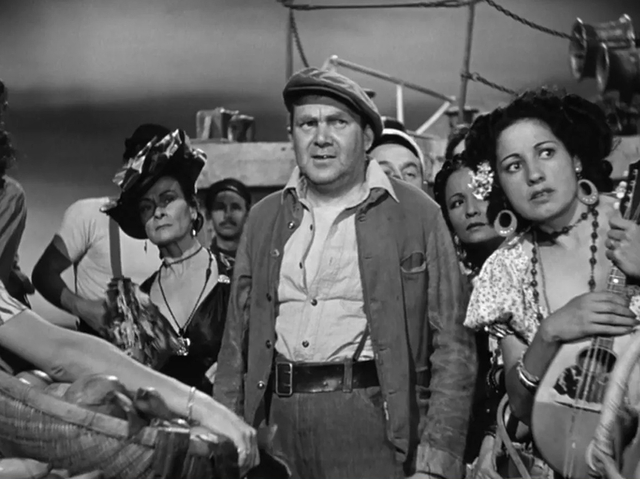
In 2015 the theatre critic John Lahr wrote of O'Neill in the London Review of Books that "if you were throwing a pity party among American playwrights, the antisocial, alcoholic, self-dramatising misery named Eugene Gladstone O'Neill would win the door prize." His description of O'Neill the man is a walking nightmare, brutal to both himself and those closest to him, who came about the mood and subject matter of his bitter studies of human wretchedness honestly.
Lahr quotes critic George Steiner saying that O'Neill was "committed in a sombre, rather moving way, to bad writing," and echoes it with Mary McCarthy, a peer of O'Neill's, judging that like other once-lauded writers like James T. Farrell and Theodore Dreiser "none of these men possessed the slightest ear for the word, the sentence, the speech, the paragraph."
"What they produce is hard to condemn: how is one to judge the great, logical symphony of a tone-deaf musician?" McCarthy wondered witheringly. "They are among the few contemporary American writers who know how to exhaust a subject: that is, alas, their trouble."
In 2017 Irish Times theatre critic Fintan O'Toole wrote an even more pitiless takedown of O'Neill in the New York Review of Books that called him "Our Worst Great Playwright."
"At times, even late in his career," O'Toole says, "he produced work so gauche that without his name on the playbill, one might ascribe it to an overwrought adolescent," which he follows with a bruising description of the worst scene from Days Without End, the play O'Neill wrote two years before winning his Nobel.
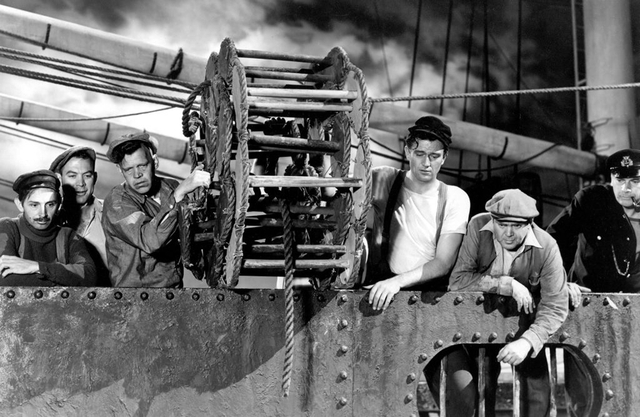
Thankfully Ford's instinct to distill and condense in order to provide a frame for his camera pares away most of the worst of O'Neill's excesses. Because ultimately The Long Voyage Home is as much a film by cinematographer Gregg Toland as it is Ford's.
Toland is one of the few truly famous cameramen in Hollywood history, mostly because of his work on Citizen Kane. His career began at the start of the talkies, and he steadily perfected his craft with films like Tugboat Annie, Les Misérables and Mad Love before his aesthetic came together on History is Made at Night, Dead End, Intermezzo and Wuthering Heights.
He was Ford's cinematographer on The Grapes of Wrath; the two men worked together for most of 1940 and he attracted the attention of wunderkind Orson Welles, a diehard Ford fan who was preparing to shoot his first film. It's hard not to see The Long Voyage Home as Toland's dry run for Citizen Kane, from the shots of the island "sirens" languidly posing among palm trees at the beginning of the picture to his signature deep focus shots of the crew in their cramped quarters aboard the Glencairn or ashore in England, where the shadows by the harbour at night seem to suck in any light but the most piercing on the wet streets.
In Print the Legend, his biography of Ford, Scott Eyman writes that Toland and Ford were temperamentally compatible, and that the director gave Toland full reign to do his work on the picture, so that "The Long Voyage Home would be among the most relentlessly photographed movies in Ford's career; every shot is a knockout. David Thomson believes that it is a movie in which 'the ... photography is out of control,' that is to say that the tail of the image is wagging the dog of the story."
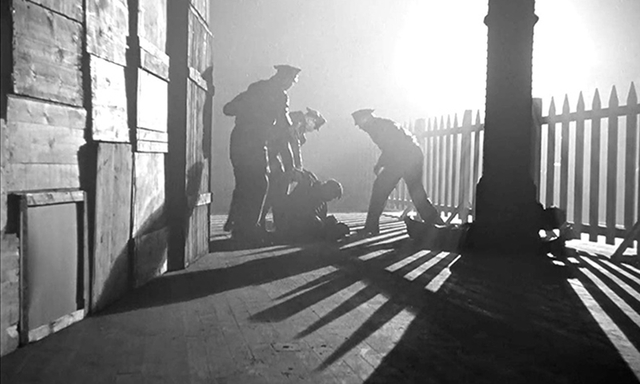
Which brings us to the story. Beyond the Homeric bones Ford and Nichols inherited from O'Neill, the picture is about the men on the boat longing for home they've left behind definitively; their unifying mission – besides survival – is getting Wayne's Ole to England and from there on a steamship back to Stockholm. Apart from that, thanks to Toland, The Long Voyage Home is – as Eyman says, quoting critic Janey Place – more "a sensationally sensual mood rather than a specific story."
Wayne was still very much the junior partner in his long relationship with Ford, but Ole is such an underwritten role that you can see how Wayne's critics constantly disparage his talent as an actor. Only a year after Stagecoach, Ole seems a real step backward for Wayne, though that might be blamed on the company he keeps onscreen.
Because there are some broad performances in The Long Voyage Home, and Wayne was told to play Ole very straight next to Axel, John Qualen's comic Swedish caricature, complete with obligatory "yumpin' yiminies."
But Qualen is cast deep in the shadows by the trio of Irishmen on the Glencairn – and specifically Mitchell's Driscoll and Fitzgerald's Cocky. Ford cherished his Irish heritage; a relentless teller of tales, he was often happy to let people believe he'd been born in Ireland. His films are full of characters either born there or of Irish descent; four were set there and three were shot on location.
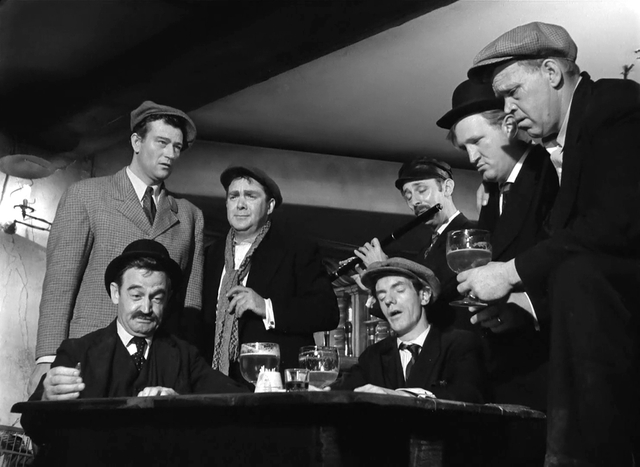
And Ford, like so many Irish-Americans, could be more Irish than the Irish. This is a phenomenon you still see in cities like Boston and New York, and it tends to an embrace of stereotypes and romanticized images of the old country that the Irish themselves find trying. The Quiet Man was Ford's most fervent cinematic hymn to his Irish homeland, but Scott Eyman notes that it's ultimately "an exile's dream of a land and people he had never known."
That Mitchell and Fitzgerald play their characters as stereotypes – the "movie Irish" that evolved out of the "stage Irish" found on both vaudeville and the legitimate stage – would have been hardly notable at the time. But their grating broadness, not to mention their impulsive, reckless behaviour and sentimentality (only occasionally stimulated by drink) is grating today, and not just for anyone (like myself) of Irish descent.
Because the crew of the Glencairn, with the exception of Ole, Smitty and Donkeyman, are a fantastically idiotic, self-sabotaging lot, especially when they follow the leads of Axel and Cocky, who manage to be both the loudest and the dimmest of them all. Sailors, it's understood, are a menace when combined with drink and while let loose ashore after weeks or months at sea. But the crew of the Glencairn are enemies not just to bystanders but to themselves; this is doubtless a by-product of O'Neill's dismal view of mankind, but it will test the patience of at least every other viewer.
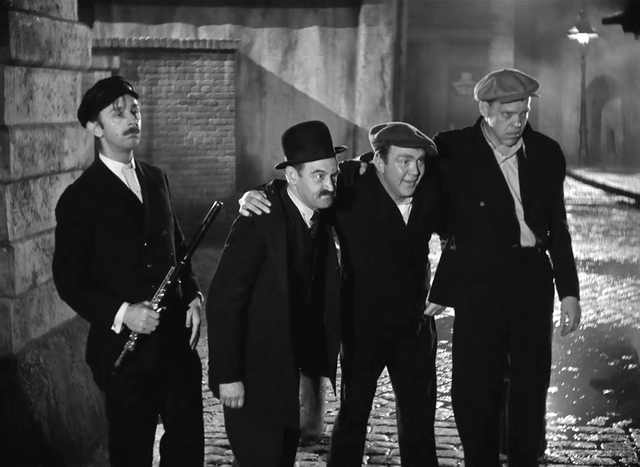
The low point is when, whipped into a paranoid frenzy by Cocky's talk of fifth column agents, the men hold a drumhead trial of Smitty, who they suspect of being an enemy agent. The metal box they think is a bomb set to blow the ship up really contains a collection of letters that tell the tragic story of how Smitty's alcoholism destroyed his family and dishonourably ended his military career.
Ian Hunter does a fine job with the desperate and doomed Smitty, as does Ward Bond, who has a touching death scene after an accident during a storm leaves Yank with internal damages beyond the basic medical skill of the captain or the meagre first aid supplies on the Glencairn.
This is all enhanced by Toland's visual artistry, and Ford's obvious fascination with life at sea, even on a rusty tramp steamer like the Glencairn. Ford had learned to sail as a boy, and his only luxury as a big-name Hollywood director was the Araner, a 106-foot ketch that he bought in 1934 and offered to the US Navy as a patrol ship when the director, an officer in the Naval Reserve, left for active duty in the summer of 1941.
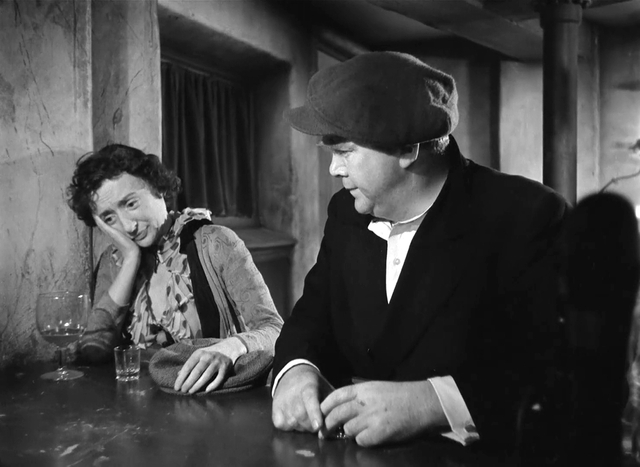
He took possession of the boat again in 1944 and sailed it as his refuge and social club until the cost of running a wooden ship depleted his finances as his career went into eclipse. Ford sold the boat in 1971 for just $25,000 and some shares in a Hawaiian resort. The Araner is apparently still afloat, moored in Ala Wai Harbor in Honolulu.
While the film was being made Walter Wanger realized that he had what could only be described as an art house picture on his hands. So he took $50,000 from the budget and hired a group of artists to come to Hollywood and paint portraits of the characters and scenes from the picture for a touring exhibition that would promote the movie.
The paintings by Thomas Hart Benton, Grant Wood, Raphael Soyer, George Biddle, James Chapin, Ernest Fiene, Robert Phillipp, Luis Quintanilla and Georges Schreiber were an excellent collection of American pre-abstract representational art, but they're impossible to see together today outside of a double page spread that ran in the September 1, 1940 issue of Esquire magazine.
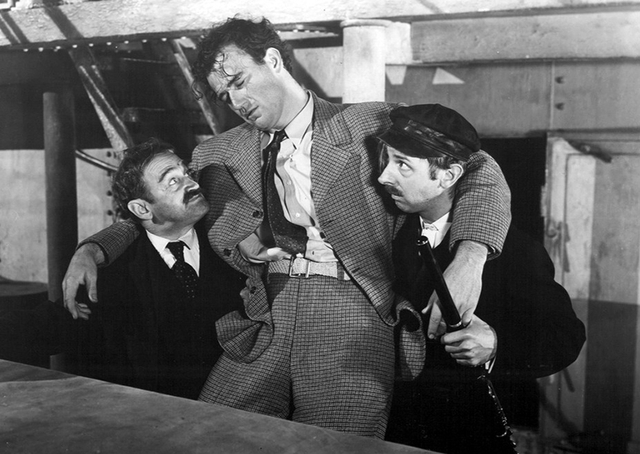
Their whereabouts today is largely unknown, though Chapin's painting of Ward Bond's death scene, owned by Wayne and hung on the walls of his home, went up for auction in 2012, but there were apparently no takers.
The film flopped in any case, losing nearly $225,000 at the box office, which Wanger blamed on United Artists' inability to book into enough large theatre chains. Ford would return to form, restoring his winning streak with Tobacco Road and How Green Was My Valley in 1941.
But the director had been working on organizing a movie and still photography unit for the Navy since 1939, and he got himself inducted as a lieutenant commander in September of 1941. (Ford would end his military career after the Korean War with the rank of Read Admiral.) He'd already got Gregg Toland enlisted in the unit earlier that year, though he would nurture a lingering disappointment in Wayne that the actor never joined up. Ford's first title as a director in uniform working for the US war effort was a half-hour short called Sex Hygiene.
Club members can let Rick know what they think by logging in and sharing in the comments below, as access to the comments section is one of many benefits that comes along with membership in the Mark Steyn Club.


